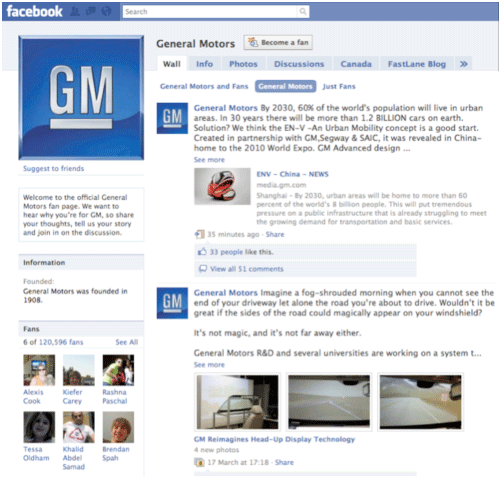Das Münchner Start-up amiando hat mal wieder seine Website gründlich aufgeräumt, das Preissystem verändert und bietet jetzt auch ein brauchbares E-Mail-Marketing an.

Design und Usability wurden komplett überarbeitet. „amiando wird kinderleicht zu bedienen“, verspricht Gründer und CEO Felix Haas. „Wir haben fast alles umgestellt. Unser Ziel war es, unser Feature-Set (German Engineering) mit einfacher Bedienung (Silicon Valley Style) zu verbinden.“
War bisher ein Euro pro Ticket auch bei kostenlosen Events fällig, so verzichtet amiando ab sofort auf diesen Obulus und verspricht sich davon eine höhere Bekanntheit. amiando wird damit auch für Veranstaltungen wie zum Beispiel Barcamps interessant, die bis dato häufig an dieser Preishürde scheiterten.
Für uns als Veranstalter der next ist das neue E-Mail-Tool besonders interessant. Zwar konnte amiando auch bisher schon E-Mails versenden, diese Funktion war jedoch eher rudimentär. Künftig kann amiando sehr brauchbare E-Mail-Newsletter versenden und hat auch gleich ein eigenes Tracking integriert.
Allerdings ist der Mailversand jenseits der ersten 1.000 Mails im Monat nicht mehr kostenlos. Bis 10.000 Mails ist ein Cent pro Mail fällig, danach ein halber Cent. 15.000 Mails im Monat kosten demnach 115 Euro.
Für die next haben wir bis jetzt Mailchimp verwendet. Mailchimp arbeitet, anders als amiando, mit einem Staffelpreismodell, das abhängig von der Zahl der Abonnenten ist. Die parallele Datenpflege in zwei verschiedenen Tools ist jedoch recht mühsam und aufwendig.
Wir setzen amiando schon seit der next07 ein. Damals war das Start-up gerade erst frisch aus dem Ei geschlüpft. Seitdem hatte das Team immer ein offenes Ohr für unsere Wünsche, Ideen und Verbesserungsvorschläge. Es hat sehr viel Spaß gemacht zu sehen, wie aus Ideen konkrete Features und Produkte wurden.
Wir werden das neue E-Mail-Tool in der nächsten Zeit auf jeden Fall testen. Auf den ersten Blick erscheint die Filterfunktion noch ausbaufähig. Ich bin aber ziemlich sicher, dass Felix und Co. früher oder später nachrüsten werden, was vielleicht noch fehlt.
Marketing
Es gibt 141 Beiträge in Marketing.
The Age Of On: Wie digitale Medien das Konsumverhalten verändern
 Vor kurzem haben Interone und Jörg Jelden (Jelden Trend & Transformation Consulting) die Studie The Age Of On vorgestellt. Sie untersucht auf gut 50 Seiten den Einfluss von vier Trends auf die Mediennutzung und das Kaufverhalten:
Vor kurzem haben Interone und Jörg Jelden (Jelden Trend & Transformation Consulting) die Studie The Age Of On vorgestellt. Sie untersucht auf gut 50 Seiten den Einfluss von vier Trends auf die Mediennutzung und das Kaufverhalten:
- Facebook übernimmt die Macht.
- Das Internet wird mobil.
- Lokalisierungsdienste (Foursquare!) sind im Kommen.
- E-Commerce als Wachstumsmarkt
Alles Dinge, die wir hier auf dem Fischmarkt ja auch schon länger predigen. Jetzt aber mal ordentlich empirisch unterfüttert und mit jeder Menge Einsichten in das Konsumentenverhalten angereichert.
Für die Studie haben Interone und Jörg Jelden die Mediennutzung und das Konsumverhalten von acht Early Adoptern (1Checker genannt) zwei Wochen lang intensiv untersucht, unter anderem mit aufgebohrten iPhones. Die zentralen Ergebnisse der Untersuchung wurden danach in einer repräsentativen Online-Befragung von 1.000 Personen aus Deutschland im Alter zwischen 20 und 39 Jahren quantitativ überprüft.
The Fragmentation of Marketing in the Age of Tribes
A few months ago, Anna and Mark of Mavens sent me Seth Godin’s book Tribes as a Christmas gift. I still didn’t bother to read it, but these days I took it with me on my trip to Berlin for re:publica. I think of the people gathering for events like re:publica and next10 (which happens to happen in just 26 days, you might want to register now) as tribes in Godin’s sense of the word.
The Tribalisation of the crowds in the age of the Social Web poses a real threat for traditional marketing. Things are getting more and more fragmented. To use the next conference as an example: Of course we run a website which is a blog at the same time. Then there is an e-mail newsletter and e-mail marketing that runs on MailChimp, which still performs well for us. We have a Twitter account, a Facebook group and a fan page as well, a Xing group and a Formspring account.
You can RSVP for the event at Facebook, Xing, Upcoming and LinkedIn. Registration and ticketing are done on amiando, but the networking features at amiando are pretty poor, so nobody uses them. Questions can be asked not only on Formspring, but also via qhub. The programme schedule is hosted at sched.org where you can login with your Facebook or Twitter account and create your own conference schedule.
SinnerSchrader has built a slick Flash interface for the schedule which will be launched soon. Since there is no flash on the iPhone, Cellular is building an iPhone app which will soon be launched, too. We are also working on an Android version together with Mobile Roadie. And who knows, maybe there will even be a Blackberry app in May. The whole conference is videotaped with videos hosted by sevenload and perhaps even streamed live to the web.
This sounds like an unmanageable mess? It sure is. I didn’t mention yet traditional marketing with media partners, telesales and classic PR. And then there is the never-ending stream of e-mail. Our tiny team which runs the conference is spread thin, and I typically ask myself every morning where to start my work. All these channels are hungry for fresh content and interaction.
The tribe which unites just once a year at the conference is scattered all over the web for the rest of the time. And it’s not easy to reach them. But on the other hand it’s a lot of fun to interact via all these channels and at all these places where people happen to stay. And unlike traditional marketing, things are much more based on interaction than on the tired broadcast model. Think of narrowcasting or micropublishing, not only in the Twitter sense of the word with a 140 characters limit, but also with a very limited and highly-focused audience.
The next tribe is tiny compared to a mass media audience. Currently we have just about 5000 e-mail addresses in our database. 1.556 people follow us on Twitter and 963 on Facebook. Besides e-mail, there is no single channel to reach them all ot once. But is this necessary? The real power of an event like re:publica or next10 lies in the networked, word-of-mouth, viral and many-to-many type of communication, not in the broadcast model.

Please behave in the Social Web: Talk about your Consumer, not about yourself!
Anyone knows the situation? It is Saturday evening and you go to a friend’s party. In Germany where I live they have stand-up parties where one stands the whole night in conversation holding oneself on a glass of beer. And then you meet a person talking only about one thing, about oneself. Difficult to escape and bad vibrations come.
What if the person talking about himself is a brand and the listener a consumer. This is what happens too often in the web. Back from the M2C Social Media conference in Paris here is my major take out: „Dear Brand, talk about the consumer, not about yourself!“
The M2C conference had great brands presenting their track record in the social web: Lego, IBM, Dell, HP, BBC, Disney, General Mill, P&G and General Motors with an impressive case of listening to customers in the middle of the GM crisis in 2009. Best practices show that talking about what matters to consumers is key in brand development online.

What a great job for our digital strategic planners at SinnerSchrader and for brand marketing: looking for consumer insights and develop ideas for platforms and social media campaigns. Developing online platforms where a consumer starts a conversation with a Brand is new for marketers. In fact this is our future.
The game has changed. Brand marketing online must change and behave. And the party will be a great success.
Laurent Burdin, Managing Director, SinnerSchrader

Fischmarkt Fight
An diesem Video führt hier auf dem Fischmarkt kein Weg vorbei. Es zeigt die Marke Fischmarkt, und zwar das Original: den Altonaer Fischmarkt. In einer speziellen medialen Inszenierung von 2:30 Dauer.
Gefunden beim Werbeblogger.
